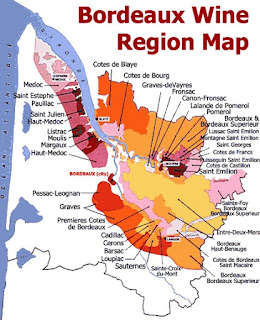Lonesome Charlie comes to mind as one that fit the bill. Another was Moody Blues which, I believe, came in a convenient mini six-pack. Watching the Pink Floyd Dark Side of the Moon laser show at the Vancouver Planetarium after consuming a number of these turned out to be a very bad idea, indeed.
Unfortunately, I tended to unfairly paint a whole slew of wines with the same sickly sweet brush. Mostly white wines.
Of course, one of those wines was Sauvignon Blanc.
Fast forward 40 years to now and to educate myself in some of the wines I don't know very well, I went to my favourite BC Signature Liquor Store in Pitt Meadows. I, of course, spoke to my favourite wine expert (got to get his name!).
I wanted to try some different Sauvignon Blancs but, of course, I said, "Cabernet Sauvignon," instead... so after I had three nice bottles of Cab Sauv in my basket to try, I finally selected, with his help, two Sauvignon Blancs.
I had the first one tonight at dinner.
The Sauvignon Blanc is a Chilean Casas del Bosque 2016 ($15.99) that I actually couldn't find on the BC Liquor Store website but, obviously, is carried there. It says Reserva on the bottle but, after a bit of research, that just means it has more than 12% alcohol (it has 13.5%).
The grapes for this wine were grown in the Casablanca Valley. It was a very clear wine and was very pale - my wife said that it was "practically invisible"! It was lemon in colour with a greenish tinge on the edges.
The nose was floral, clean and crisp. There were flavours of green apple, pear and peach, both in the nose and on the palate with the addition of lychees on the palate. I think it was medium acidity and had a short to medium finish.
We were asked, for WSET homework, to try a white wine with something acidic. I licked a lemon slice and then drank this wine. It was definitely sweeter in comparison but the lemon really did something that made the wine just a bit unpleasant. Maybe having something acidic and bitter was a bad idea. After a couple pieces of baguette, this wine returned to its crisp, clean and very pleasant taste. We had it with chicken sausages (from Oyama - not just your average sausages) and it was a nice pairing. I thing that Sauvignon Blanc would be a good pairing with a wide variety of foods.
I have now fully recovered from my unfair bias towards Sauvignon Blanc that I developed in my youth. I am truly looking forward to having another very soon as I did pick up two bottles of Sauvignon Blanc. Don't think I'll be going back to Lonesome Charlie, though!
















































